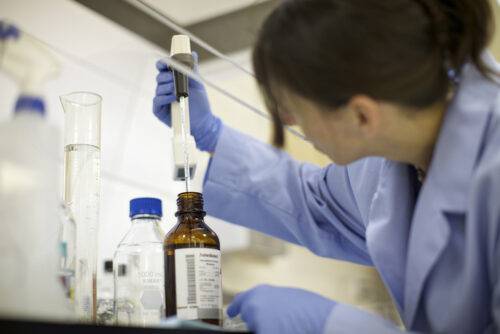A new study’s findings that sea lice in British Columbia are building resistance to the therapeutant SLICE (emamectin benzoate) is pretty much old news, but it puts a spotlight on Canada’s complex permitting process for new anti-parasitic drugs.
It is a uniquely Canadian challenge. Canada is the only jurisdiction that requires separate approvals from companies producing the active ingredients in treatment products used in commercial sea lice treatment products, says the Atlantic Canada Fish Farmers Association. The country still does not have access to the same products that have been used in other jurisdictions for years.
Conservation biologist Sean Godwin led the study released this week that analyzed salmon lice collected from salmon farms in the Broughton Archipelago in BC from 2010 to 2021. The team found that the sea lice “have recently evolved substantial resistance” to EMB, and suggested that salmon-louse outbreaks will therefore become more difficult to control in the coming years.
The issue about sea lice resistance has been known for at least a decade. “It is a concern of the vet professionals and is one of the reasons that so much investment has been made in alternative technologies,” says Brian Kingzett, the science and policy director with the BC Salmon Farmers Association.
SLICE entered the market in 1999 and was the only therapeutant used in the treatment of sea lice in British Columbia until about 2014. That year, Mowi (called Marine Harvest at the time) became the first salmon producer in the province to use hydrogen peroxide as a bath treatment for Atlantic salmon.
Mowi’s gaining the permit to use hydrogen peroxide (Interox Paramove 50) didn’t come easy. The permitting process has been – and remains – labour intensive not only for the applicants but also for the regulators. Once issued, the permit is valid for only three years.
Complex regulatory framework
The regulatory process in place in Canada is rigorous and new drug registration takes years, acknowledged Kingzett.
There are ongoing communications between the industry and government around the need for “more tools in the toolbox” for veterinarians to be able to more effectively treat and protect farm-raised salmon and well as for the government to lower the barriers to entry to new products, he says.

“The pesticide registration is challenging to animal health companies since the technical is often not open to an animal health use, the fee structure is high relative to the size of the market, and decision timelines are prohibitive.”
What complicates the matter further is the lack of incentive for pharmaceutical companies to bring their products through the regulatory process because of the small size of the Canadian market.
“Canada’s market for veterinary products is small and therefore greater alignment with other, larger ‘trusted’ regulatory agencies would help reduce the significant barriers to entry and contribute to more product availability for the sector.
“Greater alignment in the area of environmental assessment is a top priority. Classification of a product should be consistent with that of other countries; if a product is classified as a drug in other countries, then it should be reviewed as a drug in Canada,” says Kingzett.
Other methods
All salmon producers in BC have integrated pest management (IPM) strategies. Non-medicinal methods of delousing farmed salmon, such as the use of well boats and hydrolicer technology, have gained traction in recent years as part of the industry’s move to enhance sustainability and reduce stress on the fish.
Wellness strategies include reducing antibiotic use. BC salmon farmers are among the top performers in this area, with less than 5 percent of farmed salmon in BC requiring antibiotics in their lifetime, according to the Global Salmon Initiative.
They are also currently testing several design variations of semi-closed containment systems, which have so far shown promise – the salmon have shown no need for treatments for sea lice, they recorded overall better growth, improved welfare, and showed lower mortality rates than those in open-net pen systems.
“Despite the fact the Federal Government’s actions over the last several years have led to unprecedented levels of uncertainty and stress for many coastal communities, the salmon farming sector’s commitment to British Columbia has never wavered. Continuous improvement is what our industry is all about and we’ve been rapidly evolving and innovating for years,” said John Paul Fraser last year, who was at the time the executive director of the BC salmon Farmers Association.

